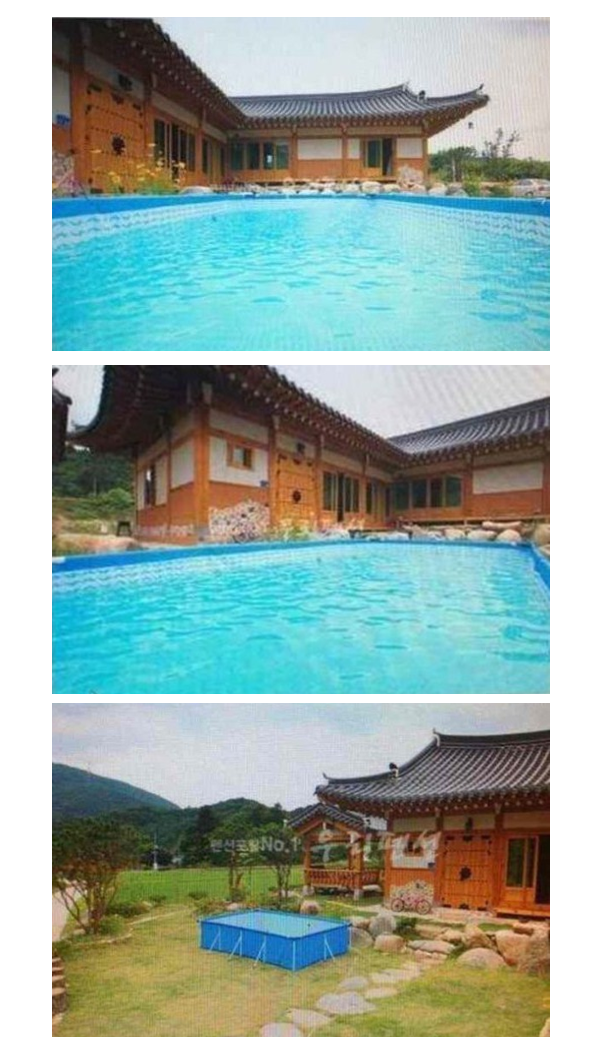2.1.1 What is framing?
Course subject(s)
Module 2. Framing essentials
In the first episode, we will show you the main characteristics of a frame. Before we get started, however, we need to define what framing actually is. Here is an example:

Suppose you are on a holiday in this house with your children, and you send one of these photographs to your parents. Perhaps you would like to emphasise that the children have had a great time swimming during the holiday – and you send the top photographs.
But it is also possible that your parents are concerned about their youngest grandchild. They know you have rented a holiday home with a swimming pool and that your youngest child cannot swim… In this case the top photographs look dangerous. However, you can send the bottom photograph. The swimming pool has high sides, so it is not possible for a small child to fall into the water!
Perhaps you had seen the top photograph in a brochure and you decided to rent the house. After all, it has a fantastic swimming pool. When you arrived, the pool turned out to be much smaller. You are angry about this and send both the framed photographs to your parents – to show how you have been duped by the owner.
What is happening here? Each time, the same reality is shown in a different frame. This leads us to overinterpret and underinterpret certain aspects of reality.

Communicating Effectively: How to Inspire and Convince by TU Delft OpenCourseWare is licensed under a Creative Commons Attribution-NonCommercial-ShareAlike 4.0 International License.
Based on a work at https://online-learning.tudelft.nl/courses/communicating-effectively-how-to-inspire-and-convince/.



